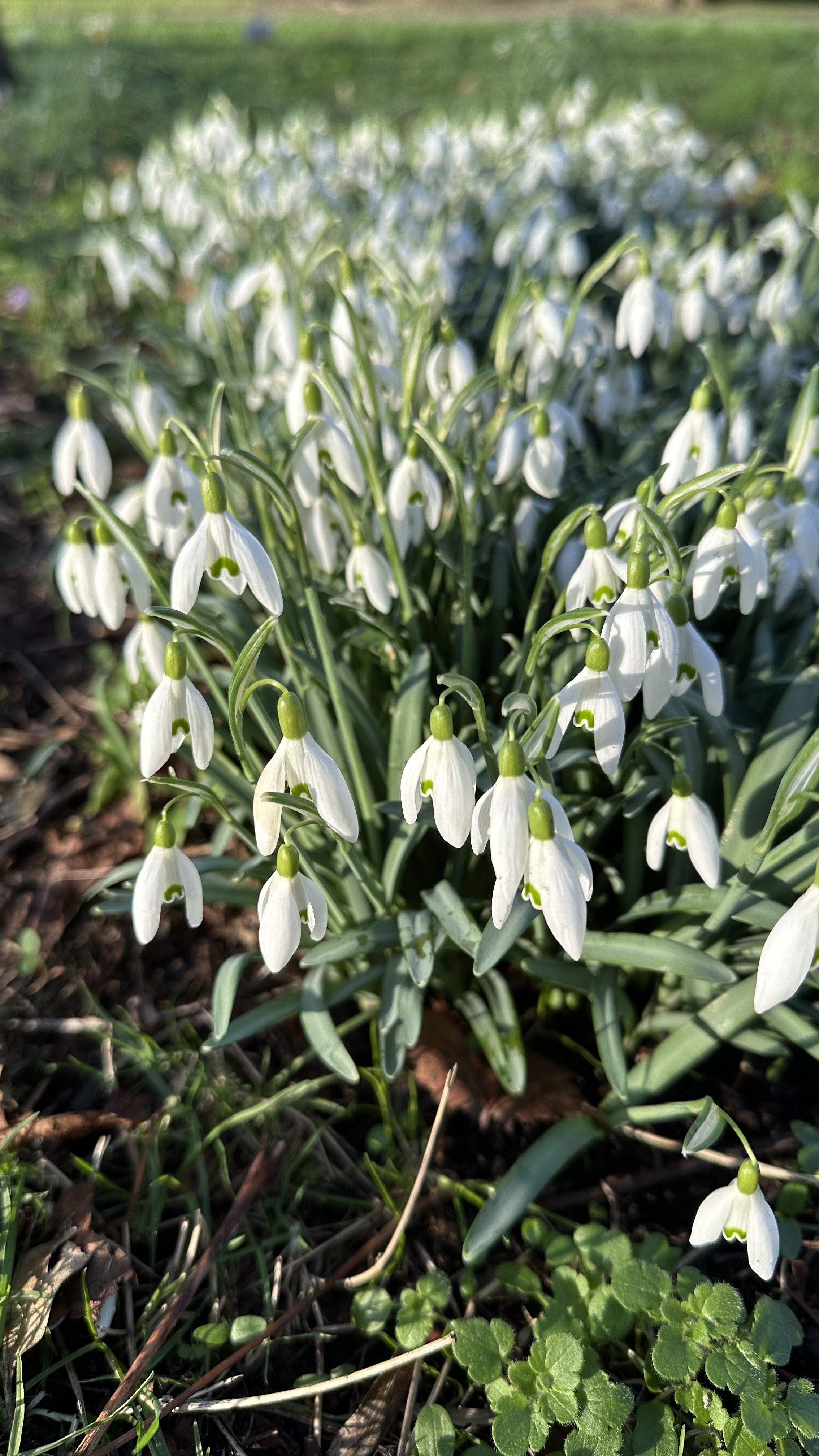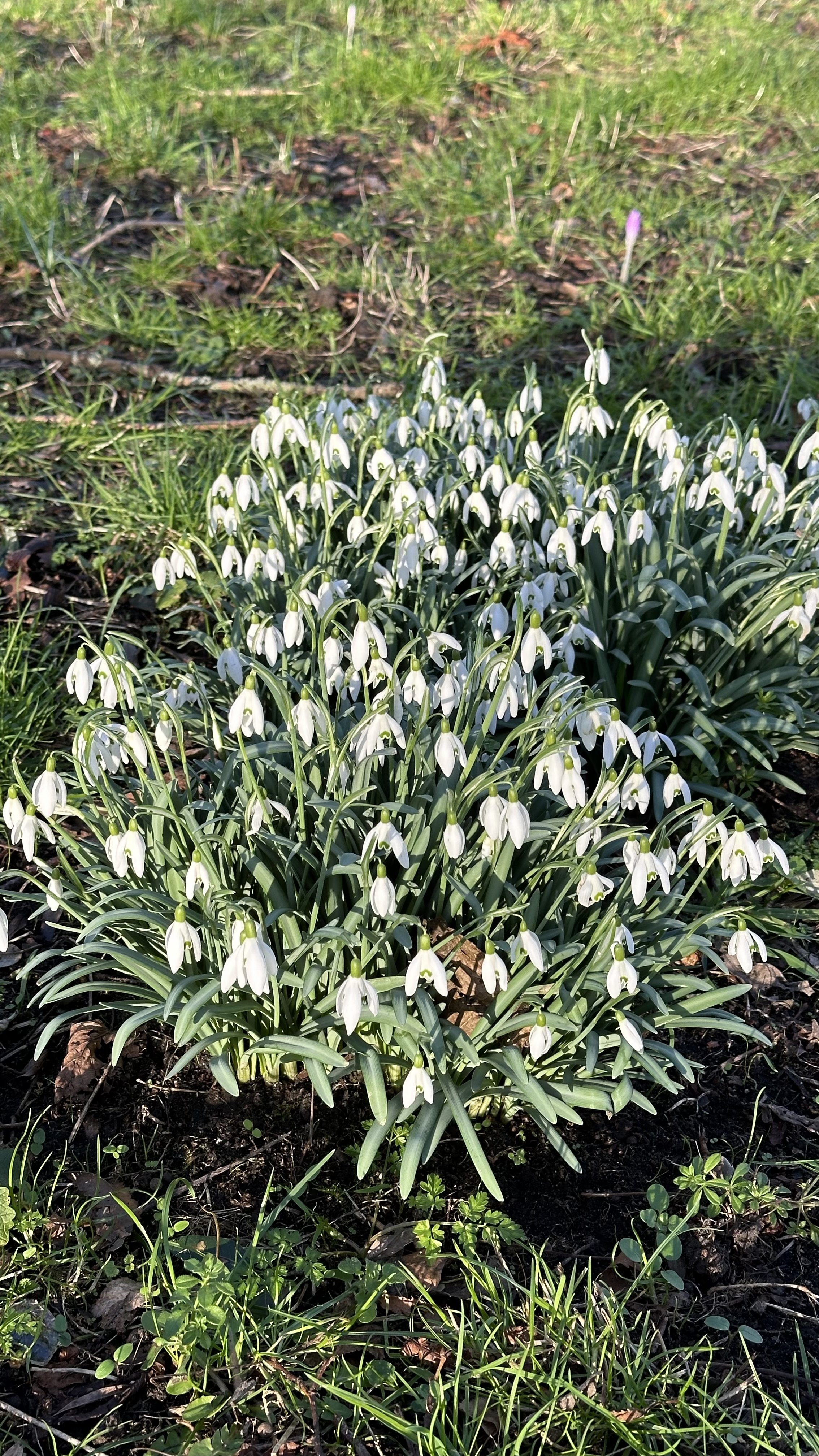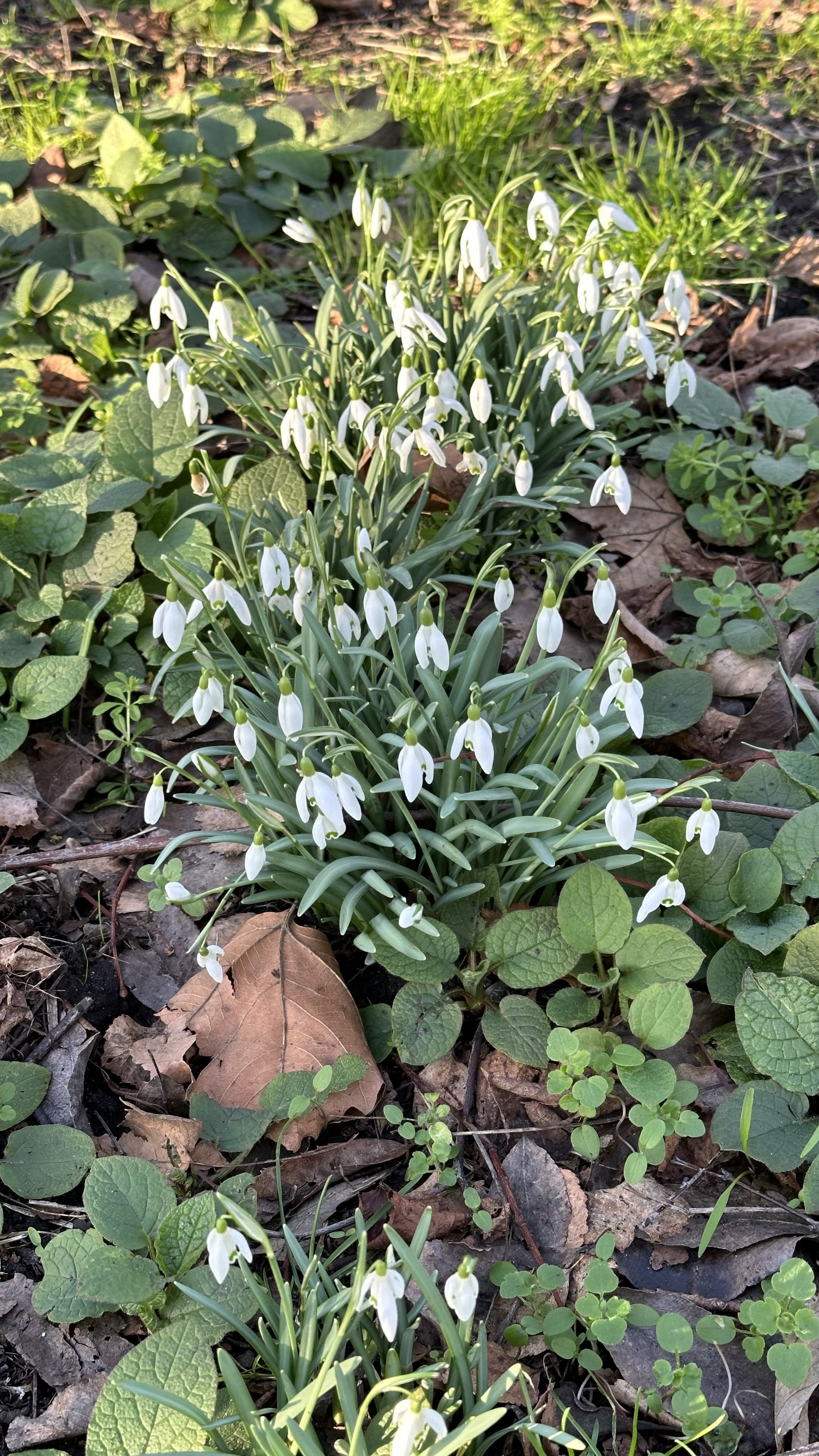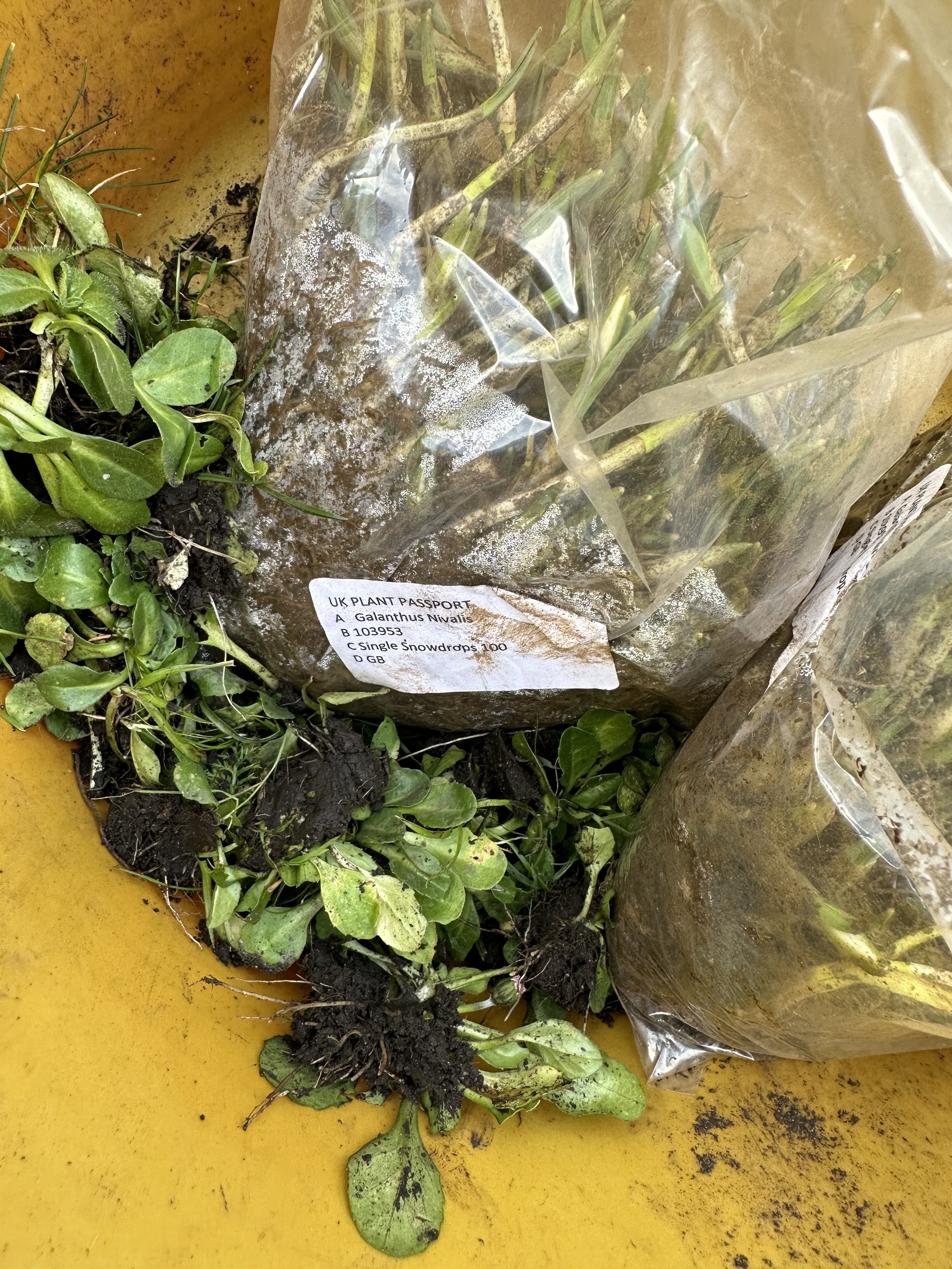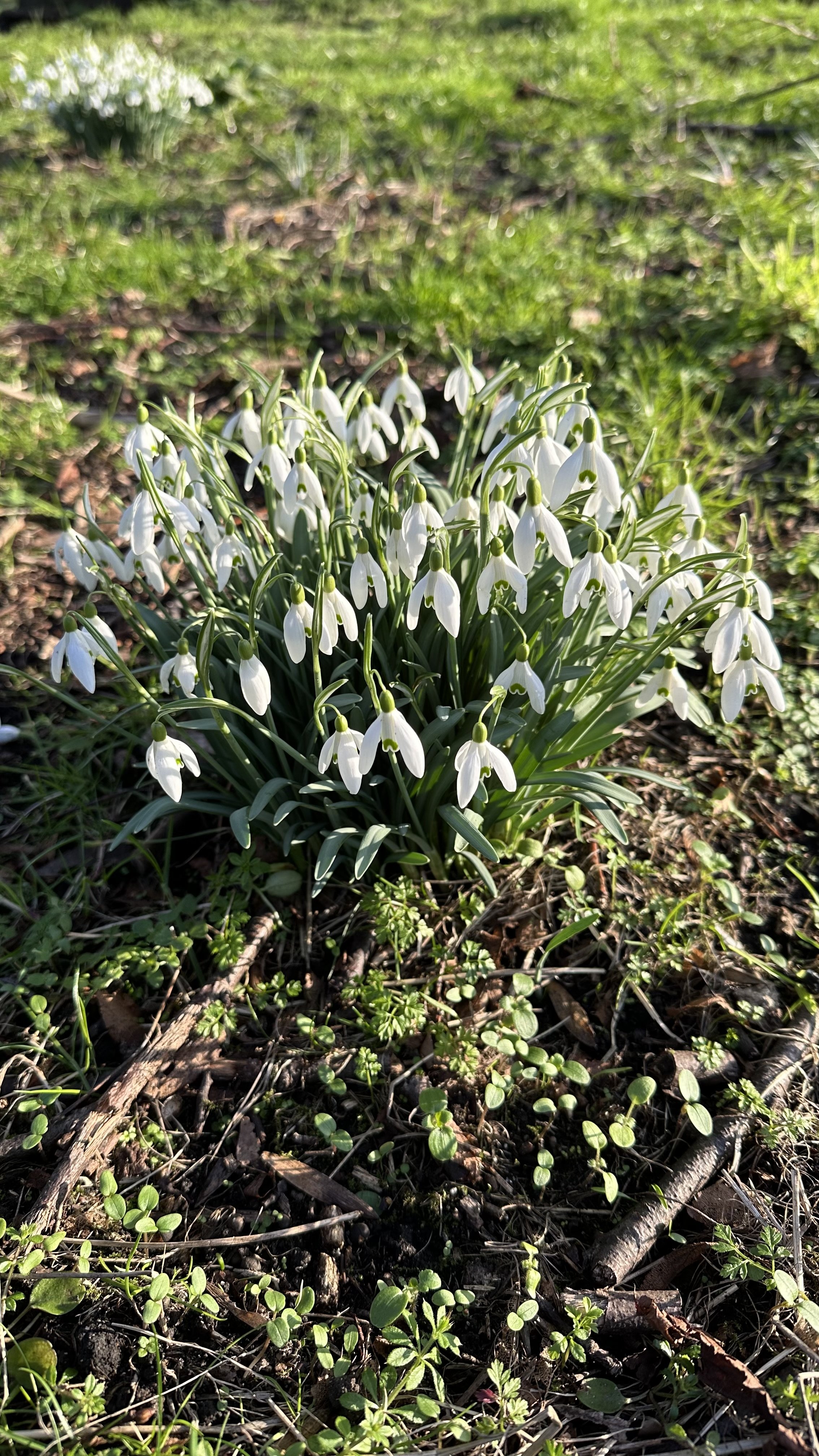When to Plant Snowdrops
This website is reader-supported - thank you! This post may contain affiliate links. As an Amazon Associate, I earn from qualifying purchases at no extra cost to you.
As the days slowly start to warm up and the first signs of spring begin to peek through, there’s one flower I always look forward to: snowdrops.
These little white blooms are some of the earliest to brighten up the garden, often making an appearance while there's still a chill in the air.
If you're wondering when to plant snowdrops, you're in the right place.
In this post, I’ll walk you through everything you need to know to get these lovely flowers started in your garden, from the best planting time to how to care for them once they’re in the ground.
Planting snowdrops is a simple yet rewarding way to welcome spring. Let’s dive in.
For more bulb planting tips, check out my guides:
What Are Snowdrops?
Snowdrops are like little messengers of spring, arriving at a time when we could all use a little reminder that warmer days are ahead.
These delicate flowers, known scientifically as Galanthus nivalis, are among the very first to bloom, often pushing their way through the cold ground while there’s still a bit of snow hanging around.
It’s no wonder they’re often called the “harbingers of spring.”
The flowers themselves are simply charming: small, white, bell-shaped blossoms with a slight green tint near the inner petals.
These flowers often bloom in clusters, forming a stunning carpet of white, and they’re so exciting to see after the winter months.
Snowdrops have this magical ability to grow and bloom even in the most unexpected conditions—sometimes they’re seen peeking out from under the last remnants of snow, which is how they earned their name.
Learn more about snowdrops with my guide:
Best Time to Plant Snowdrops
Knowing the best time to plant snowdrops is key to helping these lovely little flowers thrive in your garden.
You want to give them the best chance to establish their roots before they start their spring show.
So, when exactly should you plant snowdrops?
The answer largely depends on your climate and where you live.
In general, the best time to plant snowdrop bulbs is in the fall, usually between September and November.
Why fall? Snowdrops need time to settle in and establish strong roots before the ground freezes.
Planting them in the cooler months gives them that time, and they’ll have a solid foundation to grow from come spring.
By the time the warmer weather rolls around, they’ll be ready to break through the soil and bloom—often as one of the first signs that spring is finally here.
If you live in Zone 5 or colder climates, late September to early October is your window to plant.
The soil should be cool enough to allow the bulbs to take root but not so cold that they’re frozen.
This timing also helps avoid any early sprouting, which can happen if the bulbs start growing too early.
In areas with warmer winters, like in zones 6 and 7, you can plant a bit later, into October or even early November, as long as the soil is still workable.
The key is that you want the bulbs to have time to establish a root system before the first frost.
If you plant too late, they may not have enough time to root properly before the ground freezes, which can hinder their growth come spring.
One thing to keep in mind is that snowdrop bulbs can be a bit picky about when they’re planted.
You’ll want to avoid planting them during warmer months, as they may start sprouting too soon, or even rot if it’s too warm and wet.
For more bulb growing tips, check out my guides:
How to Plant Snowdrops
Planting snowdrops is pretty straightforward, and with just a little attention, you’ll have these lovely little flowers popping up in your garden before you know it.
Whether you're planting them in the ground or in a pot, snowdrops are pretty easy to grow and will reward you with their delicate blooms every spring.
Here’s how to do it:
1. Pick the Right Spot
Snowdrops don’t ask for much, but they do prefer certain conditions.
They love partial shade, so try to find a spot that gets a bit of sunlight but also some shade, especially in the afternoon.
A great place for them is under trees or shrubs—just like they would grow in their natural woodland habitats.
They also like moist, well-drained soil.
So, pick a spot that won’t stay soggy after it rains.
If the ground is too heavy or doesn’t drain well, your snowdrop bulbs might not do their best.
2. Get the Soil Ready
Before you pop those bulbs in the ground, give the soil a little love.
Loosen it up with a garden fork to about 4 inches deep.
If the soil feels a little heavy or clay-like, you can mix in some sand or grit to help it drain better.
Snowdrops prefer slightly acidic to neutral soil, but they’re not too picky about it—just make sure it doesn’t stay waterlogged.
And if you’re feeling extra generous, mix in some compost.
It’ll help keep the soil nice and airy, giving your bulbs a good foundation to grow strong.
3. Planting the Bulbs
Here comes the fun part—planting the bulbs.
Snowdrop bulbs don’t need to be buried too deep, so go ahead and plant them about 2 to 3 inches into the soil.
Make sure the pointy end of the bulb faces up, and the flat end (where the roots come from) faces down.
This will make sure they have the best chance to grow in the right direction.
If you're planting in groups, space the bulbs about 3 to 4 inches apart.
Snowdrops look lovely when they’re clumped together, so don’t be shy about planting several in one spot.
Giving them a little breathing room ensures they can spread out and bloom to their heart’s content.
5. Watering and Care
Once your bulbs are planted, give them a gentle drink of water.
You don’t need to flood the soil—just keep it moist.
Snowdrops don’t need a lot of attention, but if it’s a dry spell, you can water them lightly to keep the soil from drying out.
Once they start growing, leave them be and let them do their thing.
If you’re worried about the soil drying out, you can add a light mulch around them to help lock in moisture.
Just don’t pile it too high—snowdrops like a bit of air around their roots, so they don’t get too cozy under thick mulch.
For more bulb ideas, check out my guides:
Bags of snowdrops in the green ready for planting.
Snowdrops in the Green: What Does It Mean?
If you’ve heard the term “snowdrops in the green” and found yourself wondering what it’s all about, you’re not alone.
It’s actually a really great way to plant snowdrops that gives you an instant burst of spring, and it’s a technique that’s becoming more and more popular.
But what exactly does it mean to plant snowdrops in the green?
Simply put, planting snowdrops in the green means planting bulbs that are already growing and blooming.
Instead of waiting for bulbs to grow and flower after being planted in the fall, these bulbs are dug up from nurseries while they’re still in leaf or even in bloom.
You get a bulb that’s already started growing, and that means you’ll get an immediate show of those beautiful white flowers without waiting for them to sprout the next spring.
It’s a great option if you’re looking to fill your garden with snowdrops right away or if you’re trying to establish a larger patch of them quickly.
You get that instant impact—no waiting for the bulbs to settle in and grow.
Why Plant Snowdrops in the Green?
One of the biggest advantages of planting snowdrops in the green is that you get to enjoy the flowers right away.
Since the bulbs are already sprouting, you can plant them during the season they’re blooming, and they’ll often bloom within weeks of being put in the ground.
Another perk is that these snowdrops are usually a bit stronger and more robust.
Because they’ve already started growing, they’re better able to handle the transition to a new location, so you might even see them multiply more quickly than if you planted bare bulbs.
Plus, you get to see where they’re going to bloom in your garden, so you can plant them more deliberately for a fuller display.
How to Plant Snowdrops in the Green
If you’re lucky enough to get your hands on some snowdrops in the green, planting them is pretty straightforward, but it’s important to be gentle with them.
Here’s how to do it:
Timing:
The best time to plant snowdrops in the green is right after they’ve been dug up—usually in early spring, when the flowers are in bloom or just starting to open.
You’ll want to plant them as soon as possible so they don’t dry out or get stressed.
Planting Depth:
Plant the bulbs at the same depth they were growing at in the nursery.
Typically, this is around 2 to 3 inches deep.
Just make sure they’re not planted too deep, or they might struggle to push through the soil.
Spacing:
Snowdrops in the green should be planted a few inches apart, about 3 to 4 inches.
This gives them room to grow and multiply over the years.
Watering:
Once you’ve planted them, give them a nice, gentle watering.
Snowdrops in the green need moisture to help them settle into their new spot, but they don’t like to be waterlogged.
So, make sure the soil drains well.
What About Planting Snowdrops in Pots?
If you’re limited on space or just love the idea of having snowdrops in a container on your porch or balcony, you’re in luck—snowdrops do great in pots too.
In fact, planting snowdrops in pots is a fantastic way to enjoy their early spring blooms even if you don’t have a traditional garden bed.
Plus, it’s a flexible option for those who want to move the pots around to showcase them wherever they’ll be most appreciated.
The great thing about snowdrops in pots is that they’re pretty low-maintenance, as long as you give them the right conditions.
You don’t need a huge garden to enjoy them, just a little container, some soil, and a bit of patience.
Here’s how to get started:
1. Choose the Right Pot
Start by picking a pot that’s deep enough for the snowdrop bulbs.
Ideally, you’ll want a container that’s at least 6 inches deep to give the bulbs enough room to root and grow.
It’s also important that the pot has drainage holes at the bottom.
This is a must because snowdrops don’t like sitting in waterlogged soil.
If the pot doesn’t drain properly, the bulbs could rot.
If you're worried about the pot being too deep, don't stress too much.
Just ensure the bulbs are planted about 2-3 inches deep in the soil to mimic their natural growing depth.
2. Pick the Right Soil
Snowdrops prefer soil that drains well but still retains moisture, so it’s best to use a well-draining compost mix.
If you want to add a little extra drainage, mix in some grit or sand.
This will help ensure that the water doesn't collect around the bulbs, preventing them from becoming waterlogged.
Avoid using overly heavy soil, as this can cause the bulbs to rot.
Snowdrops like the soil to be moist but not soggy, so balancing that moisture retention is key.
3. Where to Place the Pot
Snowdrops like a little bit of shade, so after you’ve planted the bulbs, place your pot somewhere that gets some light but is out of direct afternoon sun.
A shaded porch, balcony, or the side of the house where there’s some filtered light will do just fine.
You want to avoid a spot that gets too hot and dry, as snowdrops won’t do as well in those conditions.
4. Planting the Bulbs
When you’re ready to plant, space your snowdrop bulbs about 3 to 4 inches apart in the pot.
Just like in the garden, plant the bulbs with the pointy end facing up.
Snowdrops are pretty forgiving, but spacing them out a little gives them room to grow and multiply over time.
5. Watering and Care
Once your bulbs are planted, give them a gentle watering.
Snowdrops like moist soil, but they don’t want to sit in water, so make sure you don’t overdo it.
Check the soil regularly to make sure it’s not drying out completely, but also not soaking wet.
During their growing season, a little regular water should do the trick, especially if the weather is dry.
If you're planting them in early fall, the bulbs will be settling in for the colder months, so you might not need to water as much.
Once the snowdrops start growing and flowering in spring, that’s when you’ll want to keep an eye on moisture levels and water them a little more regularly if needed.
6. Winter Care
If you’re planting snowdrops in pots, one thing to keep in mind during the winter months is that they may need some extra care.
In colder climates, consider moving the pot to a sheltered spot, like a garage or a porch, to protect the bulbs from freezing temperatures.
If you can’t move the pot, consider wrapping it in burlap or another material to protect the roots.
Once the flowers start blooming in spring, your snowdrops will be well on their way to becoming the stars of your little garden, even in a pot.
And since they’re in containers, you can place them wherever you want—whether it’s in a sunny window, on your front steps, or in a cozy corner of your backyard.
For more garden inspiration, check out my guides:
Caring for Snowdrops
Once your snowdrops are planted, they’re relatively low-maintenance.
Here are a few tips to help them thrive:
Lawn Care:
If you're planting snowdrops in a lawn or naturalized area, avoid mowing over them until the foliage has fully died back.
This gives the plants time to store energy for next season’s growth.
Fertilizing:
Snowdrops don't need much fertilizer.
A light application of compost or a balanced, slow-release fertilizer in the fall can help, but be careful not to overdo it.
For more ideas, check out my guides:
FAQS
When do snowdrops bloom?
Snowdrops typically bloom in early spring, often appearing as early as February or March, depending on your climate.
They’re one of the first flowering plants of the season!
How many snowdrop bulbs should I plant together?
For a natural look, plant snowdrop bulbs in groups of 5 to 10 bulbs.
This helps create a fuller display and makes the flowers stand out more in your garden.
Where do snowdrops grow naturally?
Snowdrops are native to Europe and typically grow in woodlands and meadows with moist, well-drained soil.
They can thrive in shady spots, often under trees.
For more tips, check out my guides:
Wrap-Up
Growing snowdrops is such a rewarding part of gardening, and with just a little care, you can enjoy these charming flowers year after year.
Whether you’re planting the common snowdrop with its simple, elegant snowdrop flowers, or you’re going for a unique variety like Flore Pleno, known for its double blooms, snowdrops are sure to add beauty to your garden.
Their outer petals create that signature bell shape that’s just so exciting to see as they bloom early in the spring.
Snowdrops also make fantastic ground cover, spreading gently over time and brightening up shaded spots with their sweet, white flowers.
If you’re looking to mix things up, you can even experiment with different varieties and enjoy the subtle differences in their shaped flowers.
And, with the right care, snowdrop bulbs will multiply, giving you even more blooms to look forward to each year.
No matter how you choose to plant them, snowdrops are a wonderful addition to any garden, offering a touch of spring’s magic when we need it most.
Pin this post to save for later!
